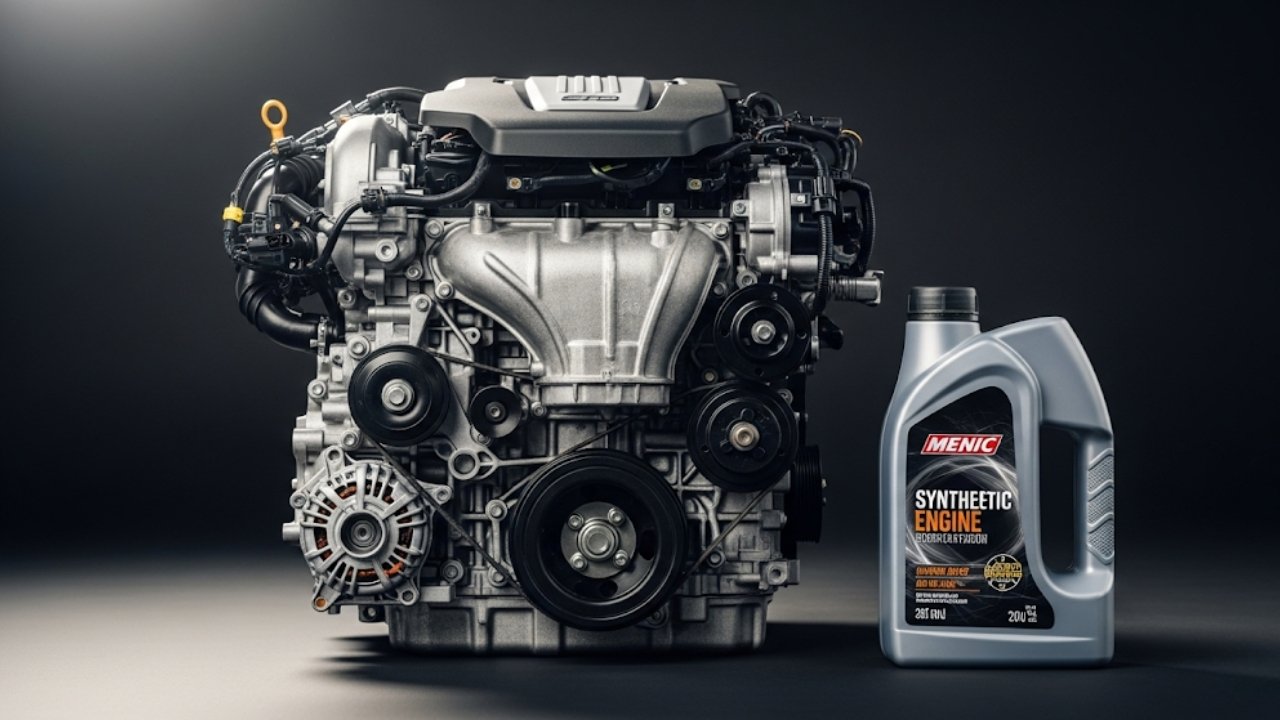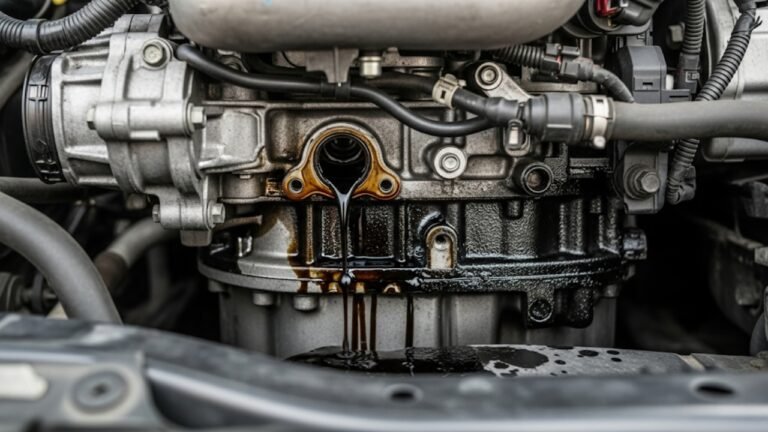Car Engine Oil Specifications: What You Need

Have you ever stood in the auto section of a store, staring blankly at rows of oil bottles, each with cryptic codes like 5W-30, API SN, or ACEA A3/B4? Yeah, I’ve been there too. Choosing the right car engine oil specifications can feel like trying to read a secret mechanic’s language. But here’s the thing—getting it wrong isn’t just a minor mistake. It could mean reduced performance, engine wear, or even damage.
I once used the wrong oil for my old Honda Civic during a rushed oil change. A week later, my engine was running louder and rougher than ever. I learned the hard way that car engine oil specifications aren’t just suggestions—they’re critical guidelines made to protect your engine’s heart. In this guide, I’ll break it down for you in plain, friendly language. No mechanic jargon, no fluff—just real info, easy to understand.
In This Article
- 1 Why Engine Oil Specifications Matter More Than You Think
- 2 Understanding the Main Types of Engine Oil Specifications
- 3 Breaking Down SAE Oil Viscosity Ratings (Like 5W-30)
- 4 API and ACEA Ratings: What Do They Actually Mean?
- 5 How to Find the Right Engine Oil for Your Car
- 6 Synthetic vs Conventional: Which One Is Better?
- 7 How Climate Affects Car Engine Oil Specifications
- 8 High-Mileage Oils: Are They Worth It?
- 9 The Hidden Danger of Fake Engine Oils
- 10 DIY Oil Change? Use the Right Specs
- 11 Top Recommended Engine Oil Brands by Specification
- 12 FAQs About Car Engine Oil Specifications
- 12.1 1. Can I mix two different engine oil brands or specs?
- 12.2 2. What happens if I use a thicker or thinner oil than recommended?
- 12.3 3. How often should I change engine oil?
- 12.4 4. What’s the difference between API SN and API SP?
- 12.5 5. Is it okay to switch from conventional to synthetic oil?
- 12.6 6. Are high-mileage oils just a marketing trick?
- 12.7 7. Do electric vehicles (EVs) need engine oil?
- 12.8 8. Why does my new car still need an oil change at 1,000 km?
- 13 Final Thoughts: Treat Engine Oil Like a Lifeline
Why Engine Oil Specifications Matter More Than You Think

Your engine goes through intense pressure and heat. Without the proper oil, the internal parts grind, wear down, and even seize up. Oil acts as a buffer, a cleaner, and a temperature regulator. But not all oils are created equal. Some are thick, some are thin. Some are made for cold weather, some for heat. And then there’s the tech side—additives, detergents, anti-wear agents.
Using oil without meeting the correct specifications is like feeding junk food to a high-performance athlete. It clogs things up, makes them sluggish, and breaks them down over time. And here’s something you might not know: using oil that doesn’t meet the standard can void your engine’s warranty. Yup, that’s real.
So yeah, the right engine oil specs are a big deal. They’re not just about the oil’s brand or how cheap it is—they’re about science and engineering.
Understanding the Main Types of Engine Oil Specifications
There are several organizations around the world that set car engine oil specifications. You’ll see codes from:
-
SAE (Society of Automotive Engineers)
-
API (American Petroleum Institute)
-
ACEA (European Automobile Manufacturers’ Association)
-
ILSAC (International Lubricant Standardization and Approval Committee)
-
OEM-specific standards (like VW 502.00 or BMW LL-01)
Let’s break it down with a helpful table:
| Specification | Stands For | What It Means for Your Car |
|---|---|---|
| SAE 5W-30 | Viscosity rating by Society of Automotive Engineers | Tells how thick or thin oil is in hot and cold temps |
| API SN | American Petroleum Institute (SN = newer engines) | Quality grade—good for engines made after 2010 |
| ACEA A3/B4 | European oil specs for gasoline/diesel engines | Offers high temperature stability, wear protection |
| ILSAC GF-6 | North American standard focused on efficiency | Improves fuel economy and emissions |
| OEM Specs | Manufacturer-specific requirements | Tailored for exact engine needs like turbocharging |
Each of these specs has been rigorously tested. They’re not just fancy labels—they’re your engine’s safety net.
Breaking Down SAE Oil Viscosity Ratings (Like 5W-30)
This part is where most people feel lost. But don’t worry—it’s actually quite simple.
Let’s take SAE 5W-30 as an example:
-
5W = the oil’s viscosity in winter (W = Winter)
-
30 = the oil’s viscosity when hot
Viscosity just means how easily the oil flows. Lower numbers flow easier. So 5W flows better than 10W in the cold, and 30 is thinner than 40 at high temps.
Anecdote time: Once during a winter trip in Sylhet, I used a thicker oil, like 20W-50. Big mistake. The car struggled to start every morning. The oil was too thick in the cold. Lesson learned: stick to the right viscosity.
Here’s a handy breakdown:
| Viscosity | Best Use Case |
|---|---|
| 0W-20 | Very cold climates, new engines |
| 5W-30 | Balanced choice, everyday use |
| 10W-40 | Hot climates or older engines |
| 20W-50 | High-mileage engines, hot areas |
API and ACEA Ratings: What Do They Actually Mean?
These labels might sound boring, but they’re like the report cards of engine oil. They tell you what the oil can handle.
API Ratings (e.g., SN, SP)
These are more common in the U.S. The letter S stands for “Service” (for gasoline engines), and the second letter shows the generation. So:
-
SJ = older
-
SN = newer
-
SP = current, introduced around 2020
Higher letters = better performance and newer technology. API SP means it’s tested for turbo engines, fuel efficiency, and wear protection.
ACEA Ratings (A1/B1, A3/B4, etc.)
These are mostly seen in Europe. They tell how the oil performs under high-stress driving, long distances, and cold starts.
If your car manual says ACEA A3/B4, don’t go for A1/B1. That’s like wearing flip-flops on a mountain hike—wrong gear for the job.
And if you drive a diesel car in Bangladesh, Europe, or have a German car, ACEA ratings are super important.
How to Find the Right Engine Oil for Your Car
Don’t guess. Always start with the owner’s manual. That’s your car’s health guide.
Most manuals will clearly state something like:
Use SAE 5W-30, API SN, ILSAC GF-6
Match those specs exactly. If it says API SN, don’t go with SM. Go newer or same, never older.
Here’s what you should look for:
-
Exact viscosity (like 5W-30 or 0W-20)
-
API or ACEA grade
-
OEM approval (some brands like Mercedes or VW need special oils)
Some common OEM specs include:
-
VW 502.00
-
BMW LL-01
-
MB 229.5 (Mercedes)
-
GM dexos1 Gen 2
If you’ve got a turbocharged engine, high-performance sports car, or hybrid, the right spec becomes even more critical.
Synthetic vs Conventional: Which One Is Better?
This debate never ends. Here’s a simple way to think about it:
Conventional Oil:
-
Made from crude oil
-
Cheaper
-
Breaks down faster
-
Needs more frequent changes
Synthetic Oil:
-
Chemically engineered
-
Handles high temperatures better
-
Lasts longer (up to 10,000 km or more)
-
Cleans engine better
Honestly, I made the switch to synthetic oil a few years back on my Toyota. At first, it felt expensive. But over time, I noticed fewer oil changes and smoother performance. Plus, fuel economy improved slightly.
So if your car supports it (check the manual!), synthetic is worth it. But again, stick to the right specifications no matter which type you choose.
How Climate Affects Car Engine Oil Specifications
Imagine pouring honey into a glass on a freezing winter morning. That’s what thick oil feels like in a cold engine. It resists movement. That’s why climate matters when picking oil.
Your region’s temperature directly influences what viscosity grade you should use. In hot areas like Dhaka or Chattogram, a thicker oil such as 10W-40 might protect your engine better during long summer drives. But in the colder hill regions like Bandarban or during chilly foggy mornings, you’ll want something like 0W-20 that flows easily at startup.
Manufacturers know this. That’s why most manuals suggest a multi-grade oil suitable for a wide temperature range—like 5W-30, which works in both heat and cold.
Personal Tip:
During a road trip to Cox’s Bazar last summer, I noticed my engine stayed quieter with 10W-30 compared to my usual 5W-20. Turns out, the thicker oil helped reduce engine heat during those long, hot highway runs. So, if your area has extreme heat, consider bumping up the second number (the hot-weather viscosity).
High-Mileage Oils: Are They Worth It?
If your car has clocked over 100,000 km, you might have noticed more oil consumption or little leaks under the engine. That’s common. Seals wear out, and internal parts expand slightly.
This is where high-mileage engine oils come in. These special formulations have additives that:
-
Rejuvenate engine seals to prevent leaks
-
Reduce oil burn-off
-
Offer better protection for worn engine parts
But remember, car engine oil specifications still matter here. A high-mileage oil must still match your manual’s viscosity and API/ACEA rating. Don’t fall for marketing if it skips your required specs.
I switched to 5W-30 high-mileage synthetic on my old 2005 Corolla, and within two months, oil top-ups became rare, and the engine noise was noticeably lower. It’s not magic—it’s just the right chemistry.
The Hidden Danger of Fake Engine Oils
Sadly, counterfeit engine oil is a real problem—especially in developing markets. Fake oils might come in refilled branded containers and are often sold at dirt-cheap prices in small workshops or online stores without verified sellers.
Using fake oil can lead to:
-
Rapid engine wear
-
Overheating
-
Sludge buildup
-
Catastrophic engine failure
How to spot fake oil:
-
❌ No API or ACEA certification seal
-
❌ No batch number or QR code
-
❌ Oil color or smell feels off
-
❌ Label print quality is poor
Only buy from authorized dealers or reputable online stores. And remember—if the price seems too good to be true, it probably is.
DIY Oil Change? Use the Right Specs
Doing an oil change at home? Great! It’s therapeutic and saves money. But here’s a quick checklist before you begin:
DIY Engine Oil Change Checklist:
-
️ Confirm the right viscosity (e.g., 5W-30)
-
Look for API SN/SP, ILSAC GF-6, or ACEA A3/B4
-
Match your OEM approval if needed (VW, BMW, Toyota, etc.)
-
Replace the oil filter every time
-
Warm up engine slightly before draining oil (for better flow)
-
Don’t overtighten the oil plug
-
Note down mileage and date for next change
Changing oil without the right car engine oil specifications is like baking a cake with the wrong flour. You might pull it off once, but it won’t be pretty in the long run.
Top Recommended Engine Oil Brands by Specification
If you’re wondering what brands to trust, here are some tried-and-true names—each offering oils certified by API, ACEA, and major automakers.
| Brand | Best For Specs | Popular Product Example |
|---|---|---|
| Mobil 1 | API SN/SP, ACEA A3/B4, dexos1 | Mobil 1 Advanced Full Synthetic 5W-30 |
| Castrol | VW, BMW, API, ACEA, ILSAC | Castrol Edge 5W-40 |
| Shell Helix | Meets Euro specs, great for turbo engines | Shell Helix Ultra 5W-30 |
| Valvoline | Ideal for high mileage, synthetic options | Valvoline MaxLife 10W-40 |
| Total Quartz | Strong ACEA and OEM approval list | Quartz 9000 5W-40 |
| Liqui Moly | German cars (VW, BMW, Mercedes) | Top Tec 4200 5W-30 |
Always verify the specification chart on the bottle before buying.
FAQs About Car Engine Oil Specifications
1. Can I mix two different engine oil brands or specs?
Ideally, no. Mixing oils with different specs or viscosities can reduce performance. If it’s an emergency, stick to the same viscosity and try to top up with a similar spec.
2. What happens if I use a thicker or thinner oil than recommended?
Using oil that’s too thick may reduce fuel economy and make cold starts harder. If it’s too thin, it might not protect the engine at high temperatures.
3. How often should I change engine oil?
Follow your car manual, but generally:
-
Synthetic oil: Every 8,000–12,000 km
-
Conventional oil: Every 5,000–7,000 km
Always factor in your driving style and climate.
4. What’s the difference between API SN and API SP?
API SP is the newer standard introduced in 2020. It offers better protection for turbocharged engines, low-speed pre-ignition, and fuel economy.
5. Is it okay to switch from conventional to synthetic oil?
Yes, you can switch anytime—as long as the car engine oil specifications match what your engine needs. No engine flush required unless heavily contaminated.
6. Are high-mileage oils just a marketing trick?
Not really. For engines over 100,000 km, the seal conditioners and extra protection do help. But use only if your car needs it.
7. Do electric vehicles (EVs) need engine oil?
Nope! EVs don’t have internal combustion engines. However, hybrid vehicles still need regular oil changes.
8. Why does my new car still need an oil change at 1,000 km?
That’s often for break-in oil change to remove any fine metal shavings. Always follow your dealer’s recommendation.
Final Thoughts: Treat Engine Oil Like a Lifeline
Cars are like people. The more care you give them, the longer they stay strong. Choosing oil with the correct car engine oil specifications is one of the simplest, most effective ways to protect your engine and your investment.
Don’t be overwhelmed by labels. Once you understand the basics—viscosity, API/ACEA ratings, and OEM approvals—everything falls into place. Read your manual, trust certified brands, and stick to your oil change schedule.
And remember, your car may not speak, but it tells you when something’s wrong. Noisy engine? Check the oil. Poor fuel mileage? Check the oil. Love your car, and it’ll love you back—smooth, strong, and reliable.






